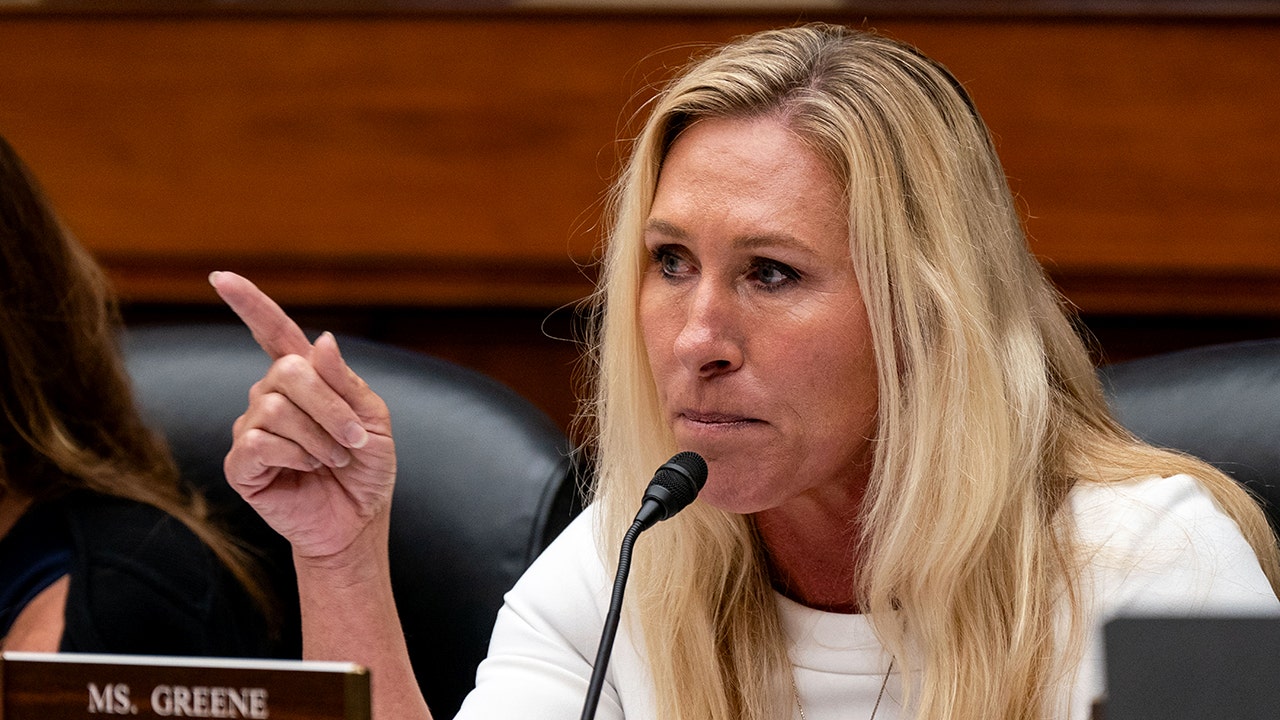Delaware
VIEWPOINT: This is a critical moment: Delaware must not go backward in health equity

Dr. LeRoi Hicks | PHOTO COURTESY OF CHRISTIANACARE
The proposed Delaware House Bill 350 is well-intended but would have terrible consequences for Delaware’s most vulnerable populations. There is a better way.
As a Black physician who has dedicated his 25-year career to understanding and addressing health equity, I am deeply concerned about Delaware’s proposed House Bill 350, which aims to address rising health care costs by establishing a body of political appointees that would oversee the budgets of Delaware’s nonprofit hospitals.
While the goal of bending the cost curve in health care may be well-intentioned, this bill will have horrific consequences for Delaware’s most vulnerable populations, including Black people, Hispanic people and other groups that have been traditionally underserved in health care. We can and must work together to solve this problem and provide the right care, in the right place, at the right time.
A tale of two cities
To borrow a phrase from Charles Dickens, Delaware, like much of America, is a tale of two cities. The experience of life—including a healthy, safe environment and access to good-quality health care—is vastly different depending on where you live and your demographic background. In the city of Wilmington, for example, ZIP codes that are just a few miles apart represent more than 20 years difference in life expectancy. This is not OK—it’s a sign that we have serious structural problems in our communities that are causing harm to people and making their lives shorter.
Importantly, chopping $360 million out of Delaware’s hospital budgets, as House Bill 350 would do in year one, is not going to help this problem—it’s going to make it worse. And in doing so, it would ultimately make health care in Delaware more expensive—not less expensive.
The key to lowering health care costs is to improve quality, access and equity
Data show that about 5% of patients in the United States account for more than 50% of all health care costs. These are primarily patients who have complex and poorly managed chronic conditions that cause them to end up in the most expensive care settings—hospitals, operating rooms, emergency departments.
The key to driving down health care costs is to improve quality and equity so that everyone is supported in achieving their best health, and these high users of the most expensive kinds of care are better supported in managing their health conditions such as diabetes or heart failure in the appropriate way. In doing so, they prevent the need for costly emergency or “rescue” care.
Let’s do more—not less—of what we already know works
Health care is not a one-size-fits-all industry. The delivery of care for patients across a diverse population requires multiple interventions at the same time. These interventions are designed not only to improve the quality of care but also to close the gap in terms of health care disparities. That’s important, because when we improve care and outcomes for the most vulnerable populations, we tend to get things right for everyone.
One type of intervention is about doing exactly the right things for a patient based on the evidence of what will help—and doing nothing extra that will cause harm or generate additional costs without providing additional benefit. An example of this might be ensuring that every patient who has a heart attack gets a certain drug called a beta blocker right after their heart attack, and they receive clear guidance and support on the actions they must take to reduce their risk of a second heart attack, such as regular exercise and good nutrition.
The second type of intervention is for the highest-risk populations. These are patients who live in poor communities where there are no gyms and no grocery stores, and people commonly have challenges with transportation and lack of access to resources that makes it difficult—sometimes impossible—to follow their plan for follow-up care. They lack access to high-nutrient food that reduces their risk of a second heart attack. They also live in areas where there are fewer health care providers compared to more affluent areas.
These interventions tend to be very intensive and do not generate income for health systems; in fact, they require significant non-reimbursed investment, but they are necessary to keep our most vulnerable patients healthy.
The medical community has developed interventions for these populations that are proven to work. A local example is the Delaware Food Pharmacy program, which connects at-risk patients with healthy food and supports their ability to prepare it. The program helps patients improve their overall health and effectively manage their chronic conditions so they can prevent an adverse event that would put them back in the hospital or emergency department.
When we work together, we succeed
We’ve seen incredible examples of how this work can be successful right here in Delaware. Delaware was the first state in the country to eliminate a racial disparity in colorectal cancer, and we did this by expanding cancer services, including making it easy for vulnerable people to get preventive cancer care and screenings. This is an incredible success story that continues to this day, and it was the result of thoughtful, detail-oriented partnerships among the state and the health care community. The work continues as we collaborate to reduce the impact and mortality of breast cancer in our state.
Unfortunately, these kinds of interventions are the first thing to go when health care budgets get slashed, because they don’t generate revenue and are not self-sustaining. These kinds of activities need to be funded—either through grants or an external funder, or by the hospitals and health care systems.
By narrowly focusing on cost, we risk losing the progress we have made
Delaware House Bill 350, as it’s proposed, would cause harm in two ways:
- First, it would compromise our ability to invest in these kinds of interventions that work.
- Second, it increases the risk that higher-cost health services and programs that are disproportionately needed by people in vulnerable communities could become no longer available in Delaware.
In states where the government has intervened in the name of cutting costs, like Vermont and Massachusetts, we see the consequences–less quality and reduced equitable access to much-needed services. House Bill 350 will widen the gap between those who have means and those who are more vulnerable.
These changes will lead to increased disease burden on these populations. They will end up in the emergency room more and hospitalized more, which is by far the most expensive kind of care. That’s not what anyone wants—and it’s the opposite of what this bill was intended to accomplish.
At this moment, in Delaware, we have an opportunity to put our state on a sustainable path to better health for all Delawareans. House Bill 350 is not that path. However, the discussion that House Bill 350 has started is something that we can build on by bringing together the stakeholders we need to collaborate with to solve these complicated problems. That includes Delaware’s government and legislators, the hospitals and health centers, the insurance, pharmacy and medical device industries, and most importantly, patients and the doctors who care for them.
LeRoi Hicks, M.D., MPH, FACP is the campus executive director for ChristianaCare, Wilmington Campus.
Note: This commentary was originally published on news.christianacare.org.
About ChristianaCare
Headquartered in Wilmington, Delaware, ChristianaCare is one of the country’s most dynamic health care organizations, centered on improving health outcomes, making high-quality care more accessible and lowering health care costs. ChristianaCare includes an extensive network of primary care and outpatient services, home health care, urgent care centers, three hospitals (1,430 beds), a freestanding emergency department, a Level I trauma center and a Level III neonatal intensive care unit, a comprehensive stroke center and regional centers of excellence in heart and vascular care, cancer care and women’s health. It also includes the pioneering Gene Editing Institute.
ChristianaCare is nationally recognized as a great place to work, rated by Forbes as the 2nd best health system for diversity and inclusion, and the 29th best health system to work for in the United States, and by IDG Computerworld as one of the nation’s Best Places to Work in IT. ChristianaCare is rated by Healthgrades as one of America’s 50 Best Hospitals and continually ranked among the nation’s best by U.S. News & World Report, Newsweek and other national quality ratings. ChristianaCare is a nonprofit teaching health system with more than 260 residents and fellows. With its groundbreaking Center for Virtual Health and a focus on population health and value-based care, ChristianaCare is shaping the future of health care.

Delaware
State Police Investigating Fatal Crash in Wilmington


The Delaware State Police are investigating a fatal crash that occurred last night in Wilmington that left one man dead.
On December 24, 2024, at approximately 7:28 p.m., a blue 2009 Hyundai Elantra was traveling northbound on Thompson Bridge Road, north of Guyencourt Road. For reasons under investigation, the Hyundai traveled into the southbound lane of Thompson Bridge Road, and into the path of a black 2015 Mazda 6 that was traveling southbound. As a result, the front of the Hyundai struck the front of the Mazda in the southbound lane of Thompson Bridge Road. After the initial impact, the Mazda traveled in a northeast direction and came to a stop near a tree line. The Hyundai remained in the roadway due to being disabled and was subsequently struck by a white 2018 Kia Sportage traveling southbound on Thompson Bridge Road.
The preliminary investigation revealed the two occupants of the Hyundai were outside of the vehicle after the initial collision, and one of the occupants was struck by the Kia.
The driver of the Hyundai has not been determined at this time. The Hyundai was occupied by a 22-year-old man from Wilmington, Delaware, and an unidentified man. The 22-year-old man was taken to an area hospital, where he was pronounced dead. His name is being withheld until his family and relatives are notified. The second occupant of the Hyundai was taken to an area hospital by EMS, where he was admitted for critical injuries.
The driver of the Mazda, a 45-year-old man from West Chester, Pennsylvania, was not injured.
The driver of the Kia, a 31-year-old woman from Lincoln University, Pennsylvania, was taken to an area hospital by EMS for non-life-threatening injuries.
The roadway was closed for approximately 5.5 hours while the scene was investigated and cleared.



The Delaware State Police Troop 2 Collision Reconstruction Unit continues to investigate this incident. Troopers are asking anyone who witnessed this collision to please contact Master Corporal R. Kunicki by calling 302-365-8417. Information may also be provided by sending a private Facebook message to the Delaware State Police or contacting Delaware Crime Stoppers at 1-800-847-3333.
If you or someone you know is a victim or witness of a crime, or you have lost a loved one to a sudden death and need assistance, the Delaware State Police Victim Services Unit / Delaware Victim Center is available to offer you support and resources 24 hours a day through a toll-free hotline at 1-800-VICTIM-1 (1-800-842-8461). You may also email the Victim Services Unit at [email protected].
The post State Police Investigating Fatal Crash in Wilmington appeared first on Delaware State Police – State of Delaware.
Post Views: 1
Delaware
Bob Dylan’s ex-wife is from Delaware? He has family history with the First State

Billie Eilish signs a fan’s chest during Firefly set
The fan held a sign asking Billie Eilish to sign their chest.
USA TODAY Handout
Bob Dylan’s new biopic, “A Complete Unknown,” is a reminder that an ex-wife of the music legend is from Delaware, although she doesn’t appear to be in the film.
But more than that, Dylan, who is now 83, has also performed in the Small Wonder multiple times, and his son has gigged here, too.”A Complete Unknown” hits theaters Christmas Day. Whether or not you plan to see the film, here’s a look at Dylan’s history with Delaware.
Bob Dylan takes Firefly record from Paul McCartney
Most Delawareans probably recall Dylan’s last concert in the First State, held at Firefly Music Festival in The Woodlands of Dover on June 17, 2017. Dylan became the oldest performer to headline the festival at age 76, a title previously held by Sir Paul McCartney, who played Firefly on June 19, 2015, just one day after his 73rd birthday.
Bob Dylan’s ex-wife Sara Dylan is from Delaware
Just like Dylan’s new movie is titled “A Complete Unknown,” very little is “known” about his ex-wife Sara Dylan. But we do know she was born in Wilmington as Shirley Noznisky and married the folk legend in 1965. The couple divorced in 1977, according to People.com. The pair had four children together, including The Wallflowers frontman Jakob Dylan and director Jesse Dylan.His ex-wife inspired songs such as “Sad-Eyed Lady of the Lowlands” from Bob Dylan’s landmark double-album “Blonde on Blonde” and “Sara” from 1976’s “Desire.”
Sara Dylan was directed by Bob Dylan in his movie
Sara Dylan played the role of Clara in the 1978 film that Bob directed and starred in titled “Renaldo and Clara.” The film is described on IMDB as “Bob Dylan on tour with the Rolling Thunder Revue in 1975; concert footage, documentary interviews and bizarre improvised character scenes.”
Jakob Dylan followed in Bob Dylan’s Delaware footsteps
Like father like son, Jakob Dylan’s band The Wallflowers also performed on the main stage at Firefly (although they didn’t headline it as the elder Dylan did). But Jakob has bragging rights for being the first Dylan in the family to play Firefly because he was there in the festival’s inaugural year, which is the first and only year it was held in July. The Wallflowers played Firefly on opening day: July 20, 2012.
Bob Dylan played other Delaware concerts before Firefly
Although Firefly was Dylan’s biggest concert in the First State, it certainly wasn’t his first rodeo here. The superstar graced the stage at the Bob Carpenter Center in Newark on Nov. 20, 1999, and April 12, 2013. Sandwiched between those shows, he played a concert at the legendary Kahunaville in Wilmington on June 8, 2004, per Setlist.fm.
What is Bob Dylan’s ‘A Complete Unknown’ about?
“A Complete Unknown” is a biopic about Bob Dylan starring Timothée Chalamet and Elle Fanning. The film follows Dylan’s four key years from 1961-1965. According to IMDB’s cast list, it looks like Sara Dylan isn’t featured in the film.
The project includes footage shot nearby in Cape May, New Jersey, this past May. Vintage cars took over the streets for the film, and signage changed the Jersey city into the scene of the 1965 Newport Folk Festival in Rhode Island.
That Folk Festival scene was inspired by Dylan’s historic moment when he famously flipped the script and played an electric set at the festival, a move that was met with a chorus of boos from the crowd, History.com reported.
Where can I watch Bob Dylan’s ‘A Complete Unknown?’
For theater locations, visit fandango.com.
News Journal reporter Ryan Cormier contributed to this report, and so did Kaitlyn McCormick of the Cherry Hill Courier-Post, a sister publication of The News Journal.
If you have an interesting story idea, email lifestyle reporter Andre Lamar at alamar@gannett.com. Consider signing up for his weekly newsletter, DO Delaware, at delawareonline.com/newsletters.
Delaware
Fire heavily damages logistics business in Newark, Delaware

Watch CBS News
Be the first to know
Get browser notifications for breaking news, live events, and exclusive reporting.
-
/cdn.vox-cdn.com/uploads/chorus_asset/file/24924653/236780_Google_AntiTrust_Trial_Custom_Art_CVirginia__0003_1.png)
/cdn.vox-cdn.com/uploads/chorus_asset/file/24924653/236780_Google_AntiTrust_Trial_Custom_Art_CVirginia__0003_1.png) Technology4 days ago
Technology4 days agoGoogle’s counteroffer to the government trying to break it up is unbundling Android apps
-

 News6 days ago
News6 days agoNovo Nordisk shares tumble as weight-loss drug trial data disappoints
-

 Politics5 days ago
Politics5 days agoIllegal immigrant sexually abused child in the U.S. after being removed from the country five times
-

 Entertainment6 days ago
Entertainment6 days ago'It's a little holiday gift': Inside the Weeknd's free Santa Monica show for his biggest fans
-

 Lifestyle6 days ago
Lifestyle6 days agoThink you can't dance? Get up and try these tips in our comic. We dare you!
-

 Technology1 week ago
Technology1 week agoFox News AI Newsletter: OpenAI responds to Elon Musk's lawsuit
-
/cdn.vox-cdn.com/uploads/chorus_asset/file/25672934/Metaphor_Key_Art_Horizontal.png)
/cdn.vox-cdn.com/uploads/chorus_asset/file/25672934/Metaphor_Key_Art_Horizontal.png) Technology24 hours ago
Technology24 hours agoThere’s a reason Metaphor: ReFantanzio’s battle music sounds as cool as it does
-

 News2 days ago
News2 days agoFrance’s new premier selects Eric Lombard as finance minister

















